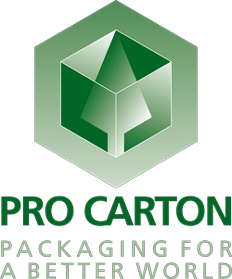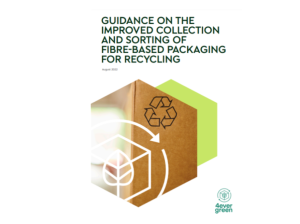The environmental impact of production, use, and disposal of increasing quantities of packaging waste has highlighted the need for more efficient collection and sorting systems.
Whilst recycling is often used to describe the whole process of re-introducing materials into the production cycle, if we want to truly understand this process, we need to look at the first two steps: collection and sorting.
Collection: picking it up where you left it
The first phase of the recycling process is collecting the packaging once it has been used and disposed of by the end consumer. We can broadly divide collection into two strands: commercial (business) and municipal (individual/household) – the difference between these streams becomes important when we look at sorting. On the other hand, a differentiation can be made depending on the collection method.
Efficient collection is an integral component of an effective recycling system. We must bear in mind the divergences in collection practices across Europe. These divergences have a direct impact on recycling rates. In the second quarter of 2022, 4evergreen will release its Guidance on Collection and Sorting – which will propose the different scenarios to tackle the approach.
What we must also bear in mind when we discuss collection is the sheer volume of the industry with 54.4 Mt[1] of fibre-based packaging being produced in 2018. Each step of the recycling industry has been developed to improve the pulp yield from the process. Improving efficiency in collection will lead to higher volumes of packaging material collected which should be seen as an opportunity to increase the quantity of material we re-introduce into the loop. As new technologies which improve sorting are developed, we will also be able to reduce the cost of the more complex recycling processes.
See it, Sort it
Sorting, the second phase of the recycling process, also presents divergences across different countries in Europe and depending on the collection streams we discussed above. Sorting in municipal facilities, where most of the household and public waste ends up, is less granular and entails higher contamination. Commercial streams, on the other hand, have a higher level of technological development which allows for a greater granularity of sorting – leading to a higher yield of material from the recycling process. Furthermore, advanced sorting technologies employ artificial intelligence to improve the granularity of material recognition across all waste streams.
4evergreen has set the ambition to increase the recycling rate of fibre-based packaging from 82.3% in 2019[2] to 90% of all collected fibre-based packaging by 2030, with a special focus on the types used for household, out-of-home, and on-the-go consumption. As there are many challenges to be faced to perfect circularity and achieve sustainable economic growth, 4evergreen’s Workstream 3 (WS-3) is developing guidelines for improved collection and sorting systems across Europe.
Our team of experts within WS-3 have identified different scenarios for the improvement of collection and sorting systems by evaluating the criteria that can contribute to reaching the 90% target. Moreover, these guidelines will consider legal restrictions, costs, and consumers’ motivation and participation.
4evergreen supports collection scenarios that facilitates the collection of all fibre-based packaging, maximise the quality of the collected material at the source and promotes nationwide uniform collections. Implementing this approach will give access to further sorting possibilities and will provide the different grades needed by the recycling mills.
[1] McKinsey Report
[2] Eurostat 2020. Available at: https://ec.europa.eu/eurostat/databrowser/view/cei_wm020/default/table?lang=en
Efficient collection is an integral component of an effective recycling system. We must bear in mind the divergences in collection practices across Europe. These divergences have a direct impact on recycling rates. In the second quarter of 2022, 4evergreen will release its Guidance on Collection and Sorting – which will propose the different scenarios to tackle the approach.
What we must also bear in mind when we discuss collection is the sheer volume of the industry with 54.4 Mt[1] of fibre-based packaging being produced in 2018. Each step of the recycling industry has been developed to improve the pulp yield from the process. Improving efficiency in collection will lead to higher volumes of packaging material collected which should be seen as an opportunity to increase the quantity of material we re-introduce into the loop. As new technologies which improve sorting are developed, we will also be able to reduce the cost of the more complex recycling processes.
See it, Sort it
Sorting, the second phase of the recycling process, also presents divergences across different countries in Europe and depending on the collection streams we discussed above. Sorting in municipal facilities, where most of the household and public waste ends up, is less granular and entails higher contamination. Commercial streams, on the other hand, have a higher level of technological development which allows for a greater granularity of sorting – leading to a higher yield of material from the recycling process. Furthermore, advanced sorting technologies employ artificial intelligence to improve the granularity of material recognition across all waste streams.
4evergreen has set the ambition to increase the recycling rate of fibre-based packaging from 82.3% in 2019[2] to 90% of all collected fibre-based packaging by 2030, with a special focus on the types used for household, out-of-home, and on-the-go consumption. As there are many challenges to be faced to perfect circularity and achieve sustainable economic growth, 4evergreen’s Workstream 3 (WS-3) is developing guidelines for improved collection and sorting systems across Europe.
Our team of experts within WS-3 have identified different scenarios for the improvement of collection and sorting systems by evaluating the criteria that can contribute to reaching the 90% target. Moreover, these guidelines will consider legal restrictions, costs, and consumers’ motivation and participation.
4evergreen supports collection scenarios that facilitates the collection of all fibre-based packaging, maximise the quality of the collected material at the source and promotes nationwide uniform collections. Implementing this approach will give access to further sorting possibilities and will provide the different grades needed by the recycling mills.
[1] McKinsey Report
[2] Eurostat 2020. Available at: https://ec.europa.eu/eurostat/databrowser/view/cei_wm020/default/table?lang=en
About 4evergreen
4evergreen is a cross-industry alliance perfecting the circularity of fibre-based packaging to contribute to a climate-neutral and sustainable society. Our goal is to raise the overall recycling rate of fibre-based packaging to 90% by 2030. We bring a particular focus on packaging with a lower circularity performance today, namely the types used for household, out-of-home and on-the-go consumption. You can find more information here.




